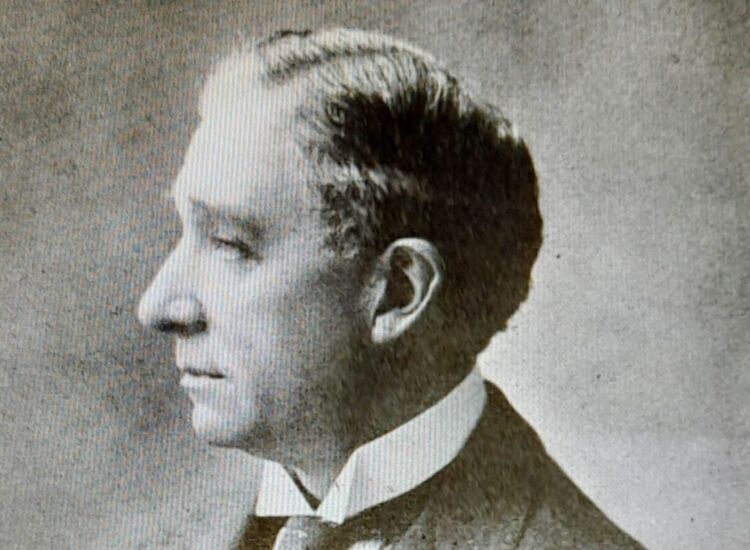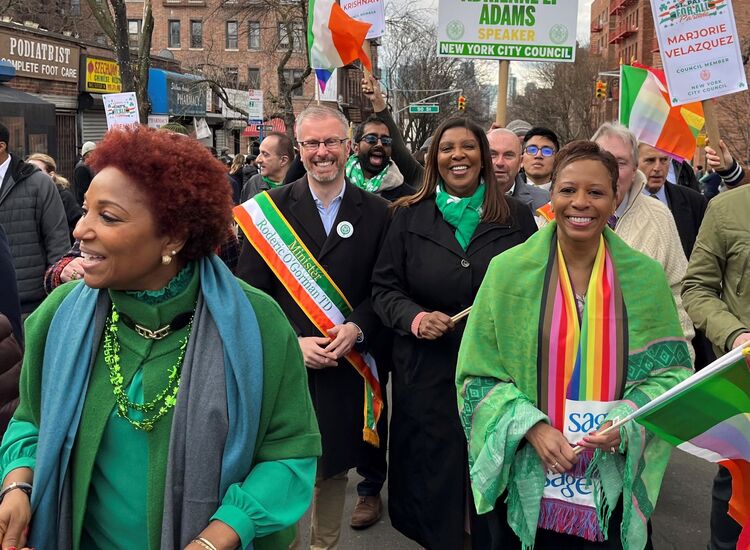By Peter McDermott
"A Visit from the Goon Squad," opens with the robbery of a purse in a hotel bathroom.
The perpetrator is Sasha, one of the main characters in the interconnected series of stories that constitute Jennifer Egan's latest novel.
"That's the point where this intersects with my own life," Egan said, explaining one part of the inspiration for the scene. "I actually had my wallet stolen 12 maybe 13 times in my life."
She also traces it to the occasion of a Christmas Eve meal she had in the bar of a Manhattan hotel with her husband, their two young sons (now ages 9 and 7), her mother and stepfather. Washing her hands in the bathroom, she spotted a "fat green wallet" inside an open bag. The novelist thought: "She's lucky it's me, seeing this wallet, and not a different kind of person." And then she wondered about the kind of person who would take it.
Egan had been planning to start a book set on the home front -- specifically Brooklyn, where she lives -- during World War II, but postponed it to write about Sasha, her boss Benny Salazar, a New York record-company executive who began his career as a punk-rock musician in late 1970s San Francisco, and various other protagonists.
The action - set from the early 1970s through 2020 - also features overseas locales, such as Kenya and Naples. Egan has been to those places, but she doesn't appear in the novel nor does anybody she knows. The hotel bathroom scene is Egan's almost Hitchcock moment - the nearest she gets to a fleeting appearance.
Generally, "A Visit from the Goon Squad" might not appear to have anything in common with the work of Hollywood's master of suspense. There's no murder in the plot, nor indeed any unifying plot to speak of. But reviewers reported this past summer that they were hooked early on. An interviewer said her work was "every bit as engaging" as Steig Larsson's international best-selling trilogy. One critic called her a "piercingly astute storyteller" and another said she was "stylistically fearless and eerily prescient."
In the New York Times Book Review, Will Blythe said: "Remarkable...Is there anything Egan can't do?"
Many had approached with skepticism the book's 75-page Chapter 12, written in PowerPoint from the perspective of a 12-year-old girl (Sasha's daughter) a decade from now. Yet, they agreed: it worked.
Egan, whose "uncategorizable," "genre-bending" books have made her one of the most talked about writers in America, uses "metafiction" techniques, which have been around for centuries but are more common now.
"[In] what's come to be thought of the standard novel, there's no play at all with the artifice itself," she said in a café near her home in Fort Greene. "The idea is: this is a world, we're entering in it and now you're here. And so, in an historical novel the idea is: this is taking place in the past, imagine that you're in the past and let's go with the story.
"My impulse would be to play with that a little more," she said. "We're not really in the past. We're in the present; everything about the past reads differently, in fact, is a construction of that present. I wasn't there. You weren't there. We're all imagining it together," she said.
"It would be surprising to me, and disappointing to me, if I didn't find some way for that dimension to be part of the book. It just seems like a missed opportunity," Egan added. "But it's tricky, because there's nothing more annoying than just post-modernist claptrap."
Egan, who writes early drafts in long hand on legal pads, is in some crucial respects a traditionalist. "There's no separating language from thought," she said. "The language has to be strong or everything begins to slip.
"I believe profoundly in continuing to read and think and communicate in sophisticated ways, especially when the problems we as a world are dealing with have never been greater. It couldn't be more important," said the novelist who writes lengthy features for the New York Times magazine.
As a teenager, Egan thought about a medical career (her maternal grandfather was a doctor) and then flirted with the notion of being an archeologist. That all changed in the few weeks between the end of a summer job and her starting at the University of Pennsylvania. Against the backdrop of the break-up of her mother and first stepfather's marriage, she traveled alone around Europe. "It became clear to me that I had to be a writer," she said.
After graduating she got a scholarship to study at St. John's College, Cambridge, for two years. And in the fall of 1987, she moved to New York, where she was careful not to take jobs that would push her writing into second place.
Egan was born in Chicago on Sept. 7, 1962, to a German-American mother, who was a native of Rockford, Ill., and a father from the Southside whose family is "very proudly Irish-American and very clannish." Her parents' marriage ended when she was 2 and was later annulled so that he could remarry in the Catholic Church. The writer moved with her mother and stepfather to San Francisco at age 7. (Still, a West Coast interviewer noted a few years ago that "she retains a Midwestern lack of pretense.")
"It really wouldn't happen now. Divorced parents tend to stay near each other," said the novelist, who has two half-brothers and two half-sisters, as well as stepsiblings. "We were a fractured '70s family."
Egan, the granddaughter of a police commander, maintains close ties with family members in her native city. "I only ever really feel part of an ethnic group when I'm in Chicago," she said. "It's a nice feeling."
She had a good relationship with her late father despite the distance and his alcoholism. "He got sober ultimately, which was really great," she said.
He fretted about the wisdom of his daughter's career choice, but she won him over with her first story in the New Yorker. "It was a huge stamp of legitimacy. From my parents' point of view, you couldn't argue with the New Yorker," she recalled, laughing.
A collection of her stories and her first novel were published in the years before her father's death in an accident in 1996.
Egan has used a great variety of styles in her five books, but raises, she said, the same few questions, usually concerning the potentially corrosive effects of media and new technologies on identity and self-image.
"'Look at Me' [2001] is very directly an exploration of the pressures involved in creating oneself as an object in the world and the impact of that on inner life," she said.
"I go in feeling very pessimistic and I come out feeling more optimistic, which is surprising," she added. While writing "Look at Me," she came to the view that "there's something in us that none of that can touch."
The "Goon" in the title of her latest book is a reference to time. "I think none of us really understands, as young people, that we will get old and die," she said. "So the discovery that that is true is tragic."
Despite the dark truth, the writer must plow on. And the bar has to be kept high, even impossibly so.
"Shakespeare wrote incredible, just mind-bogglingly great works again and again and again," said Egan, who is married to theatre director David Herskovits. "The goal is not just to publish a few books and have a good time. The goal ideally is to try to create work that lasts and pushes the conversation forward in some way.
"That's what most of us are striving for," she said.
In the short term, Egan is getting back to her wartime novel. For that, she will draw on an extraordinary resource: interviews she conducted for an oral history project with women who worked in the Brooklyn navy yards and were fired when the war was over.
"And I've done other types of research on it. But research and being ready to write are two different things." Egan said. "Now it's the moment when the rubber meets the road, as they say."
"A Visit from the Good Squad" is published by Knopf and is priced at $25.95. For more about the novelist, go to her website at www.jenniferegan.com.
[PHOTO BY PIETER M. VAN HATTEM]









